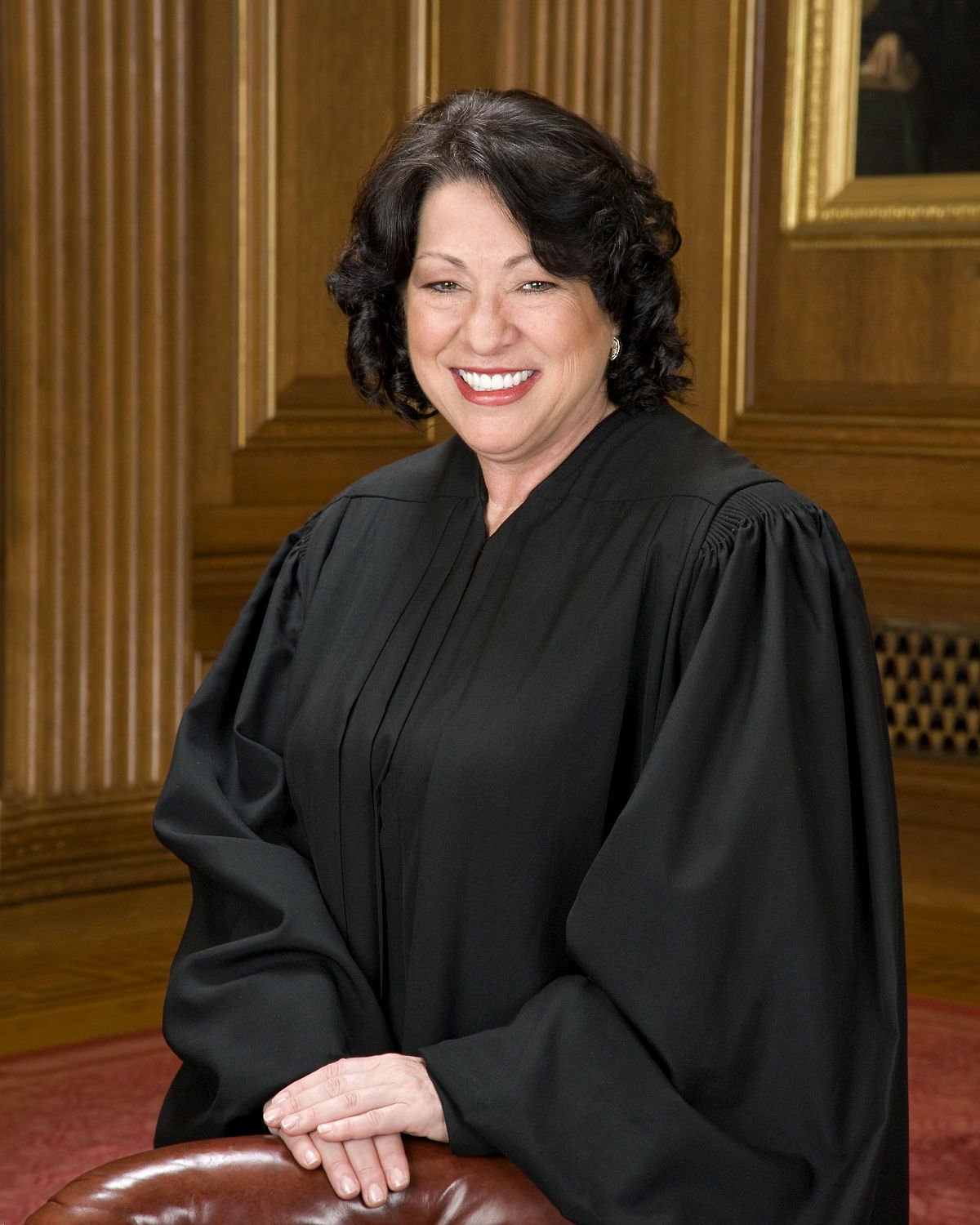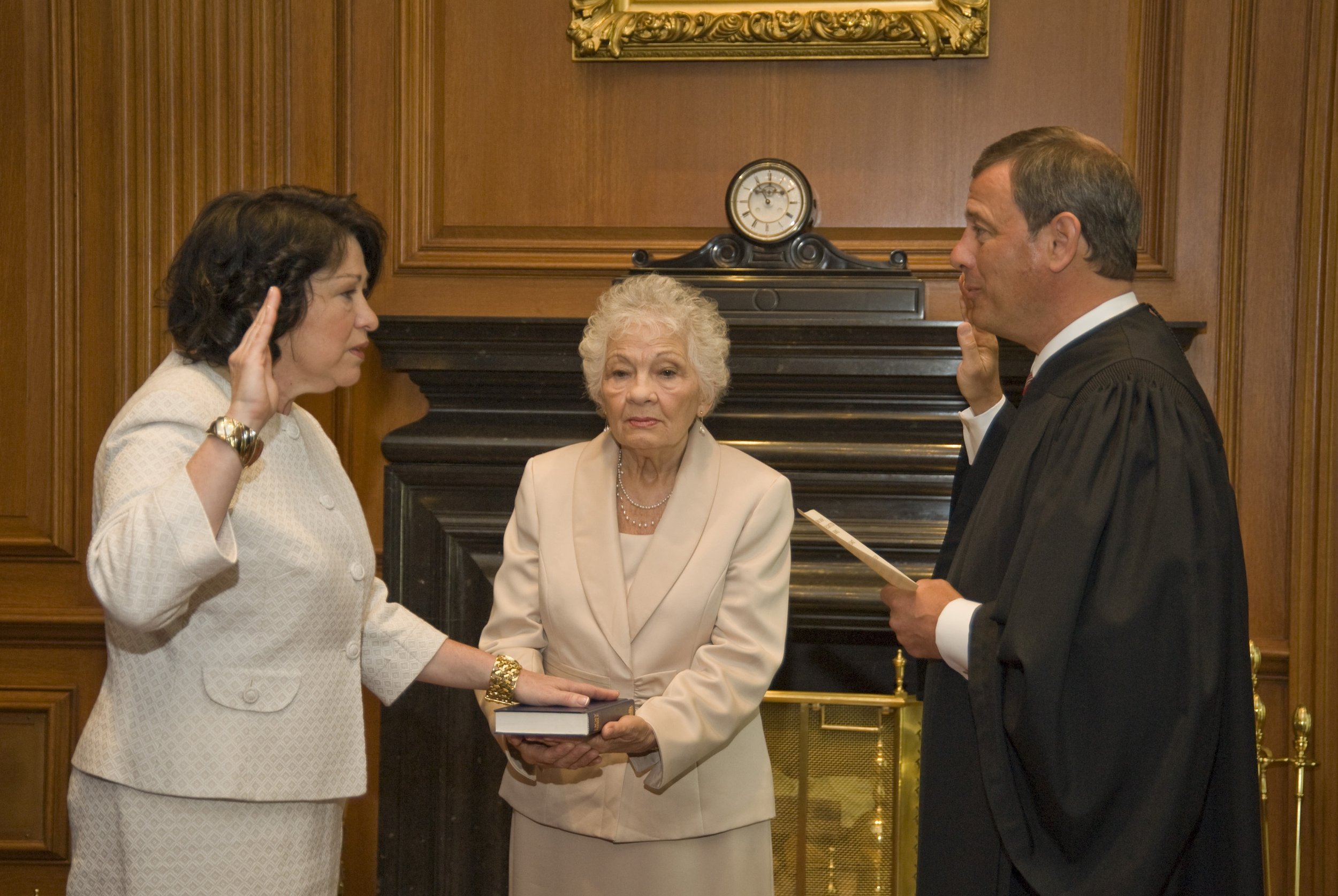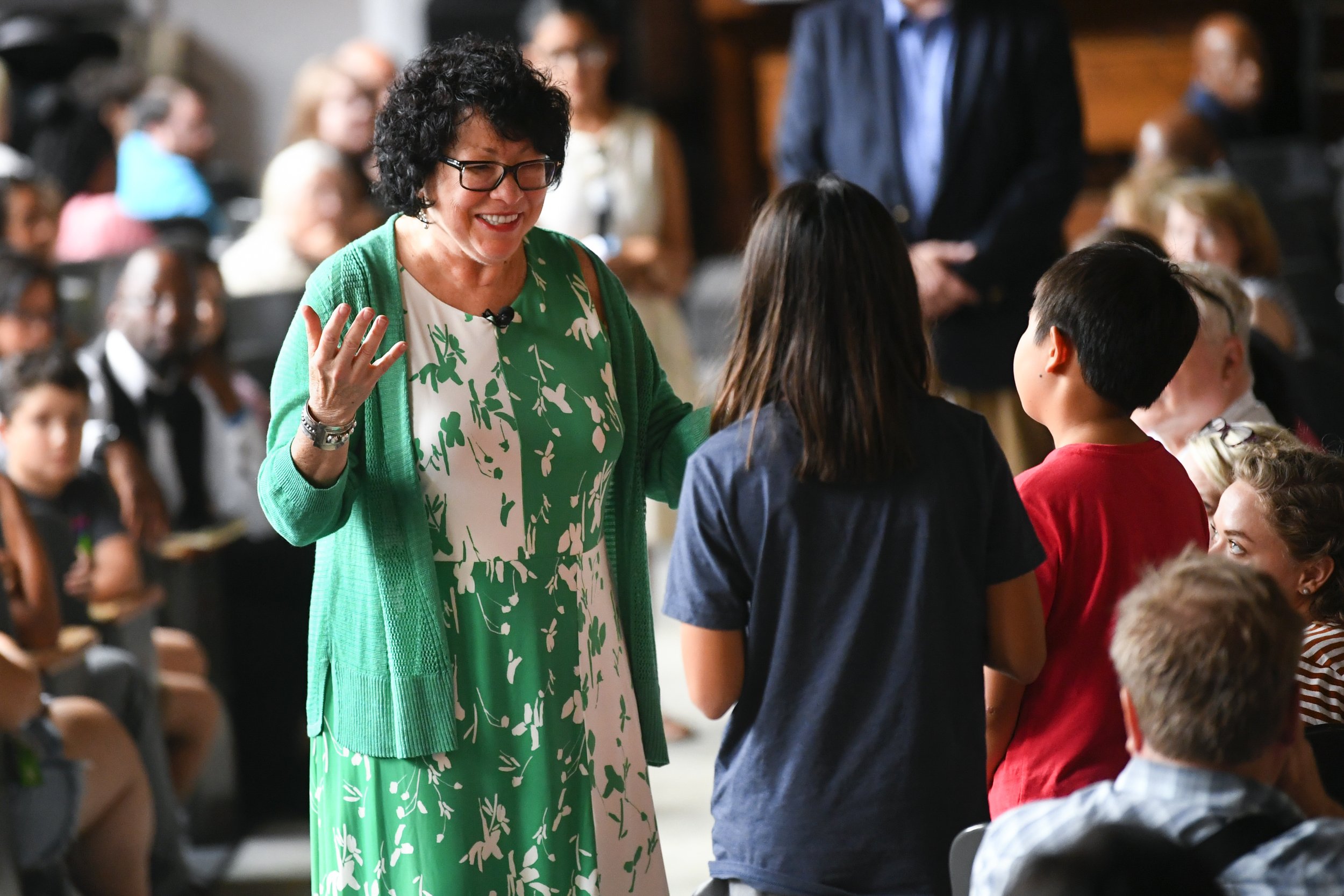SONIA SOTOMAYOR
Appointed by: Barack Obama
Sworn in: August 8, 2009
Preceded by: David Souter
2009 — Present
Associate Justice
Personal Life and Education
Sonia Sotomayor was born in the New York City borough of the Bronx on June 25, 1954. Her parents, Juan Sotomayor and Celina Báez moved from Puerto Rico and got married during World War II. Sotomayor’s mother served in the Women’s Army Corps before working as a telephone operator and eventually as a nurse, while her father spoke little English and worked as a tool and die worker. Sotomayor grew up Catholic and was closest with her grandmother, stating that she gave her “protection and purpose.” At 7, Sotomayor was diagnosed with type 1 diabetes and at 9, her father passed away. Sotomayor originally sought to become a detective, but her diabetes diagnosis led doctors to suggest another career path. By age 10, Sotomayor was inspired by the show Perry Mason to pursue a career as a lawyer.
During her elementary school years, Sotomayor attended the Blessed Sacrament School, where graduated as valedictorian of her class and maintained an almost-perfect attendance record. Despite being underage, found work at a nearby retail store and hospital while she attended school. Before her freshman year, Sotomayor successfully passed entrance exams and enrolled at Cardinal Spellman High School in the Bronx, where she actively participated in the forensics team and served in student government, eventually graduating as valedictorian in 1972.
After graduating from high school, Sotomayor attended Princeton University. During her first year, Sotomayor struggled to adjust, but she spent countless hours at the library and worked with a professor outside of class to devote herself to her studies. By her last two years at Princeton, Sotomayor received almost all A’s.
While at Princeton, Sotomayor wrote opinion pieces for the Daily Princeton and served as co-chair for the Acción Puertorriqueña organization, which fought to provide more opportunities for Puerto Rican students. As co-chair, Sotomayor worked with Princeton’s president on hiring and curriculum and convinced the school to create a seminar on Puerto Rican history and politics. Also at Princeton, Sotomayor joined the board of Princeton’s Third World Center, served on the student-faculty Discipline Committee, volunteered as an interpreter for Latino patients in the hospital, and ran an after-school program for children. In 1976, Sotomayor graduates summa cum laude with an A.B. in History.
In the fall of 1976, Sotomayor began attending Yale Law School where she was an editor of the Yale Journal of International Law. At Yale, Sotomayor continued her activism and served as co-chair for a group advocating for the hiring of a more Hispanic faculty. In 1979, Sotomayor graduated from Yale with a Juris Doctor.
Sonia Sotomayor speaking at Princeton in 2014 | Credit: Denise Applewhite, Princeton Office of Communications
Career
After graduating from Yale Law School in 1979, Sotomayor worked as an assistant district attorney in New York County, where she prosecuted criminal cases with a focus on issues such as child abuse, homicide, and gang violence. In this position, Sotomayor often worked 15-hour days and gained a reputation for being prepared and fair. She left the district attorney’s office in 1983 and began her own informal practice which she called “Sotomayor & Associates.”
In 1984, Sotomayor transitioned to private practice, she specializing in intellectual property litigation. Sotomayor represented clients in complex cases involving trademarks, copyright infringement, and commercial disputes. Sotomayor’s work began to earn a reputation in the legal community as a rising star and in 1987, New York Governor Mario Cuomo appointed her to the board of the State of New York Mortgage Agency, where she served until 1992. In 1988, New York City Mayor Koch appointed her as one of the founding members of the New York City Campaign Finance Board, where she served for four years.
In November 1991, Sotomayor was nominated to become a federal judge by President Bush Sr., becoming the youngest judge in the Southern District of New York and the first Hispanic federal judge in the state. After her nomination was initially blocked by partisanship between Senators, she was eventually confirmed by unanimous consent of the full Senate on August 11, 1992.
In June 1997, President Clinton nominated Sotomayor to a seat on the U.S. Court of Appeals for the Second Circuit. After her hearing before the Senate Judiciary Committee, her nomination was sent to the full Senate for a vote. In October 1998, the Senate approved Sotomayor’s nomination by a vote of 67 to 29.
Nomination to the Court
After Justice Souter announced his intention to retire in 2009, intense speculation about who President Obama would nominate began to grow. Sotomayor was a top contender for the nomination and in May 2009, President Obama officially announced her as his choice to fill the vacancy on the Court.
Sotomayor appeared before the Senate Judiciary Committee in July 2009, where she faced questions from Senators on her past rulings and other written work. In particular, Senators asked about past statements she’d made concerning race, but she assured them that her judicial record reflects one of fairness and that she has never let her own life experiences influence her decisions.
Her nomination was reported favorably to the Senate by a vote of 13 to 6. In August of that year, the Senate confirmed her nomination by a vote of 68 to 31.







